
As the protagonist in"The Bridge of Light" (whom I believe to have been Clark Savage Senior) proceeded through the jungle to find the lost Mayan city, he encountered two "dragons" which the Codex he bought in Spain had warned about.
The first "dragon" was a giant flying reptile -- a pterosaur -- that was as big as a small airplane with a 6-foot long beak filled with sharp teeth . The head did not have any elaborate balancing crest on the back as in a pteranodon, nor was there a tail. In the story it is described as being dark black in color and having what sounds like a 40 feet wing-span. It was a huge animal. No such pterosaur was known to science until the 1980s. That was when Quetzalcoatlus northropi was discovered.

It was the largest animal ever to fly with a wingspan of 45-50 feet.

It was indeed as big as an airplane.
 And it would dwarf a man standing next to it.
And it would dwarf a man standing next to it.
One problem with this identifcation is that Quetzalcoatlus had a toothless beak. The species that Clark Senior encountered may have been a more primitve relative that still retained teeth. Or it may have been artificially equipped with teeth by whatever placed it there in the jungle. (More on this later.)

Notice that most of these images show Quetzalcoatlus as being blue/gray in color. This is no accident.


I think that this giant pterosaur was frequently seen in the skies over the Valley of the Vanished and that the Mayans took it as a good omen. In The Man of Bronze, the criminals painted their airplane blue and flew it over the valley to mollify the populace. They may have been doing so in imitation of the pterosaur. The black color of the creature's corpse may have been the result of the damage done to it at death after Clark Senior shot it down with his .45 pistol.
The other "dragon" was a giant meat-eating theropod dinosaur that Clark Senior and his guide encountered immediately after the experience with the pterosaur. Clark Senior described it as 30 feet tall with long sharp teeth. It was green in color with intricate geometric patterns on its skin to camouflage it in the jungle. It also had a "crest of spikes" on its head. In the story, this animal grabbed his Indian guide with one of its front limbs and bit his head off.

The largest known meat-eating theropods were about 40-45 feet long and stood from 15-20 feet tall when they reared up fully. They weighed between 6 and 8 tons. The animal Clark Senior encountered in the jungle must have been over 60 feet long and weighed 10-12 tons! What I find most fascinating is the description of "spikes" on its head and the colored pattern of its skin. The only horned theropod known at that time was Ceratosaurus which was always depicted with a single horn on its snout as seen below. And no one before the 1970s ever depicted dinosaurs with patterns on their skin. What is described in the book sounds like a REAL dinosaur as modern science would expect it to look.

A theropod with multiple horns on its head was unknown to science in 1929. But in the 1980s, such a fossil theropod was discovered in Argentina: Carnotaurus sastrei. It had two large horns over its eyes like a bull or a devil.

This animal lived in the late Cretaceous era. It was 30 feet long, stood 11 feet tall at the hip, and 15 feet tall when it fully reared its head. It would have weighed about 2 tons.

Obviously this is a much smaller animal than the one that is described in the story but the description is eerily similar. There is no way that anyone could have known about a multi-horned theropod at that time. Clark Senior must have encountered a large unknown species of the Carnotaurus genus with longer front limbs and a more exotic set of horns.

This was a frightening encounter with a demonic looking giant monster. Clark Senior was lucky to have escaped with his life.
The meat-eating dinosaur described in the book had a "crest of spikes" on its head which sounds like more than one pair of horns. There are dinosaurs with this type of head gear: Pachycephalosaurs. These were likely used in matting displays and occasionally as weapons. Pachycephalosaurs had thick domes of bone on the top of their skulls and probably used to run into opponents using the the top of their heads as a battering ram. Those spikes added an extra layer of hazard.
These dinosaurs looked like this:


The problem is that these are medium-sized plant-eaters, so the monster in the story could not have been one of them. I suspect that the animal in question was actually a early carnotaur with multiple spikes used as a mating display, longer front limbs, and a longer snout. Eventually, the multiple spikes were reduced to a single large pair over the eyes and few small bumps.
We have seen in the fossil record that in the late Cretaceous large solitary theropods were evolving into smaller theropods that hunted in packs. An example of this are the large predators Utahraptor and Megaraptor that are believed to be the early ancestors of the later smaller Velociraptor.
Or it could have been "engineered" for a particular purpose by some unknown being.
But the really BIG mystery is where did these two "dragons" come from? Only these two creatures are ever seen. They did not have mates or companions. And what were they doing in the jungle? Quetzacoatlus was a glider who would have nested on flat open ground and coasted on thermals near the shoreline. Likely he fed on fish and molluscs. And a huge theropod would generally have feasted on large prey animals such as Sauropods, Ceratopsians, or Hadrosaurs. But no prey that large lived in the Mesoamerican jungle and what did live there would have been small and fast and hard for a large animal to catch.
This introduces the possibility that these two "dragons" were specially bred and kept by someone or something to protect the Valley of the Vanished from intruders. This being may have arranged the feeding of its charges by special means. Maybe the Carnotaur was kept in hibernation or suspended animation for long periods until it was called on to attack intruders.

The pterosaur as we noted earlier likely was blue colored and its presence flying over the Valley was seen by the Mayans as a good omen. But maybe the flying reptile was actually doing aerial reconnaissance and could somehow communicate with its master or its fellow "dragon" to direct attacks on interlopers. It is probably no coincidence that it was the morning after Clark Senior shot the Quetzalcoatlus when the giant Carnotaurus found him and his guide. Maybe there was a telepathic link between the two "dragons" and the theropod had been directed to that spot before the pterosaur died.
One candidate for the master of these monsters was the centuries-old Mayan shaman who befriended Clark Senior and helped him in the Mayan city. He did possess some interesting advanced technologies. and it would seem logical for him to be the one who protected the city.
There is another possibility. There have been rumors that the extra terrestrial winged crustacean-like beings known as the Mi-go had some of their mysterious mines deep in the jungles and mountains of Mesoamerica. We know that they are masters of biotechnology and they could have created the "dragons" to guard their own privacy. Maybe they had an agreement with the Shaman who assisted them in some mysterious way. (See the Chaosium "Call of Cthulhu" game module A Resection of Time.)
The Shaman kept his own counsel on this matter and never revealed any connection between himself and the "dragons".
In any case, this explains why Clark Senior was so fascinated with Maple White Land. He wondered if there was some connection between the only two places in the Americas where living dinosaurs had been found: the plateau in the Matta Grosso and the jungles of Hidalgo.
One may ask why Doc and his men did not run into either of these monsters when they first came upon the Valley of the Vanished. They apparently came in the "back way" through a secret mountain pass. Meanwhile, the "dragons" protected the "front door" of the Valley which was in the opposite direction. Likely the patrolling pterosaur was shot down by Kukulkan's men without warning so that their blue painted plane took its place. Maybe it died before it could activate its fellow "dragon". In any case, Doc and his men were never molested by the monsters. It is possible that there is an untold story about how they neutralized this threat.



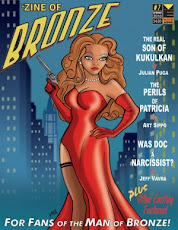
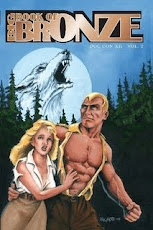



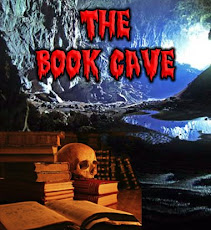


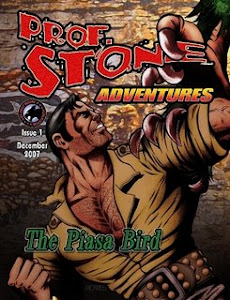


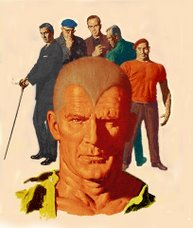

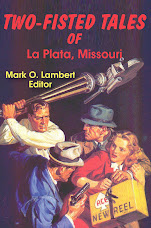
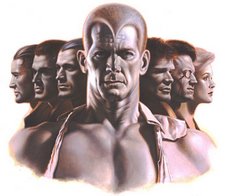


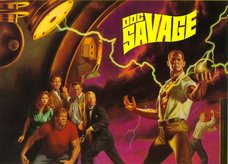





No comments:
Post a Comment